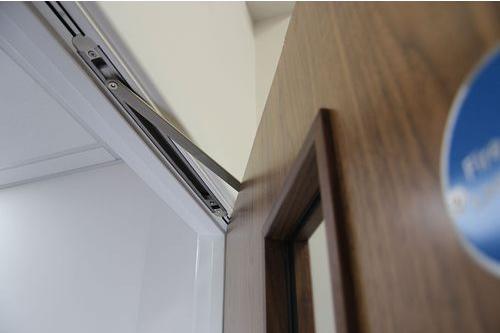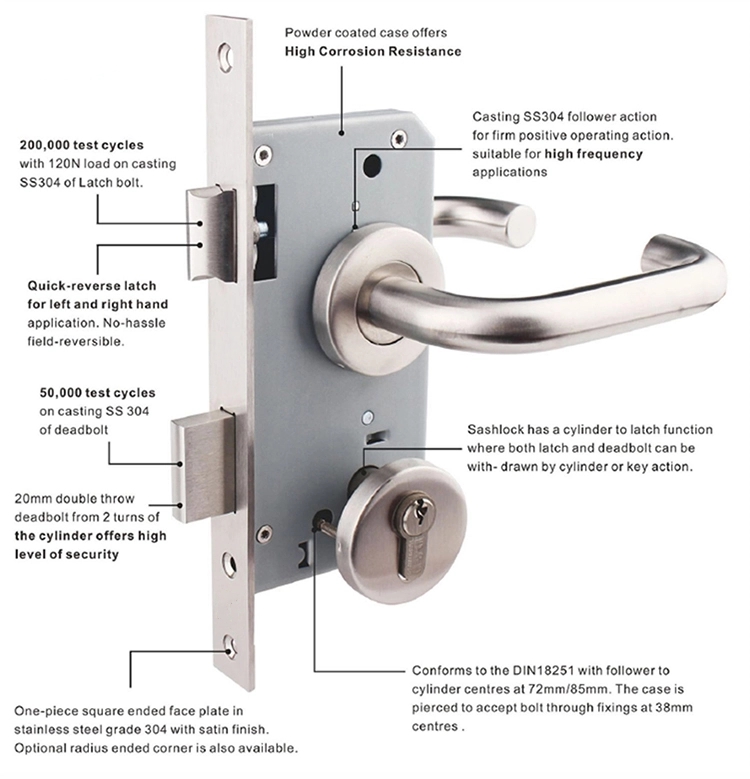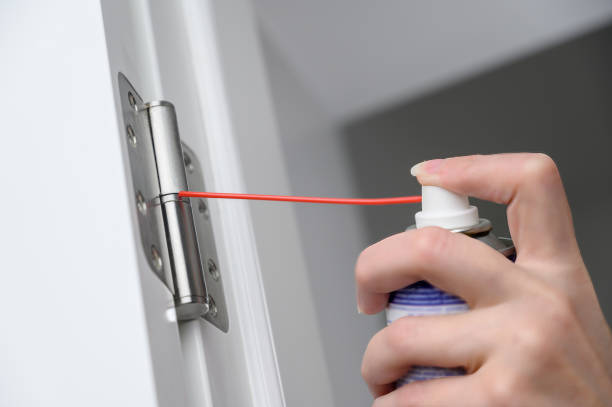Fire-resisting doors, also known as fire-rated or fire-resistant doors, are essential components of modern building safety systems. These doors are designed to prevent or delay the spread of fire, smoke, and heat between different areas of a building, providing critical time for occupants to evacuate and for emergency responders to take action. While much of the attention is often focused on the door’s material and fire-rating certification, the building hardware used in fire-resisting doors plays an equally pivotal role in ensuring their performance.
In this blog, we’ll delve into the role of building hardware in fire-resisting doors, its critical components, the standards they must meet, and how they contribute to building safety and compliance.
Understanding Fire-Resisting Doors
Fire-resisting doors are tested and certified to withstand fire for a specified duration, typically 30, 60, 90, or 120 minutes. Their primary purpose is to compartmentalize a building during a fire, limiting the spread of flames and toxic gases. However, the effectiveness of these doors depends not only on their core material but also on the hardware components that complement their functionality.
For a fire-resisting door to perform as designed, it must be installed with the right hardware, all of which must comply with fire safety regulations. Even a minor defect in the hardware can compromise the integrity of the door, rendering it ineffective during a fire.

Key Building Hardware Components in Fire-Resisting Doors
The hardware of fire-resisting doors includes a variety of components, each serving a specific function. Here are the key elements:
1. Hinges
Hinges are crucial in holding the door securely to the frame while allowing smooth operation. For fire-resisting doors, hinges must be constructed from fire-resistant materials such as stainless steel and tested to ensure they can withstand high temperatures without deforming.
Fire-rated Hinges Features:
- Heat-resistant material
- Secure anchorage to the frame and the door
- Compliance with fire testing standards, such as BS EN 1935
Properly installed fire-rated hinges ensure that the door remains in place even under the intense conditions of a fire.

2. Door Closers
Door closers automatically close the fire-resisting door after it has been opened, ensuring that the barrier against fire and smoke is re-established. This is critical, as an open fire door is as ineffective as no door at all.
Key Features of Fire-Rated Door Closers:
- Tested to endure high temperatures without failure
- Adjustable closing speeds to meet accessibility requirements
- Compliance with standards like BS EN 1154
Door closers can be surface-mounted, concealed, or floor-mounted, depending on the design and aesthetic requirements.

3. Locks and Latches
Locks and latches play a dual role in fire doors. They secure the door under normal circumstances and ensure the door remains closed during a fire. Fire-rated locks and latches must be robust enough to withstand fire exposure and prevent the door from being pushed open by pressure differences caused by the fire.
Requirements for Locks and Latches:
- Made from fire-resistant materials
- Tested and certified according to standards like BS EN 12209
- Designed for easy egress in emergencies, often paired with panic hardware

4. Panic Bars and Emergency Exit Devices
In public or high-occupancy buildings, fire-resisting doors are often equipped with panic bars or push bars, allowing occupants to quickly and easily open the door in an emergency.
Features of Fire-Rated Panic Hardware:
- Made from non-combustible materials
- Operable with minimal force for rapid evacuation
- Compliant with BS EN 1125 for panic exit devices
5. Handles
Handles on fire-resisting doors must be able to withstand high temperatures and maintain their functionality during a fire.
Key Features:
- Heat-resistant materials
- Tested for durability and fire resistance
- Compliance with BS EN 1906 for performance and durability

6. Other Essential Hardware
- Door Stops: Prevent the door from overextending or slamming, ensuring long-term functionality.
- Vision Panels and Glazing: Fire-resistant glass inserts that allow visibility without compromising fire integrity.
- Automatic Drop Seals: Maintain a seal at the bottom of the door, crucial for smoke containment.
Standards and Regulations for Fire Door Hardware
Fire door hardware must comply with strict international standards and local building codes to ensure its reliability during a fire. Some key standards include:
- BS EN 1634-1: Fire resistance testing for doors and shutters
- BS EN 1935: Performance standards for hinges
- BS EN 1154: Mechanical requirements for door closers
- BS EN 12209: Lock and latch standards
- BS EN 1125: Panic exit device standards
Compliance with these standards ensures that the hardware can endure the harsh conditions of a fire without failure.
The Importance of Correct Installation and Maintenance
Even the best fire-resisting door and hardware will fail if not installed or maintained correctly. Installation should be carried out by certified professionals who understand the specific requirements of fire doors and their hardware.
Regular inspections and maintenance are equally critical. Over time, hardware can degrade or loosen due to wear and tear. Fire door inspections should check for:
- Proper alignment and closing
- Secure fastening of hinges, locks, and handles
- Compliance with fire safety regulations

The Role of Fire Door Hardware in Compliance and Safety
Fire doors and their hardware are not merely safety features; they are legal requirements in many jurisdictions. Non-compliance with fire safety regulations can result in significant penalties, insurance voidance, and, most importantly, endanger lives.
Building managers and owners must ensure that:
- Fire doors are certified and meet the required fire-rating specifications.
- Hardware components are tested, certified, and compatible with the door assembly.
- Regular inspections are conducted, with records maintained for audits.
By prioritizing the correct selection, installation, and maintenance of fire door hardware, buildings can significantly enhance their fire safety measures.

Conclusion
The role of building hardware in fire-resisting doors is often underestimated but is crucial to their overall performance. Each component—hinges, closers, locks, latches, and seals—works in harmony to ensure that fire doors serve their purpose effectively.
Incorporating high-quality, compliant hardware is not only a regulatory obligation but also a moral responsibility to protect lives and property. With advancements in technology, there are now smarter, more efficient hardware options available, making it easier than ever to equip fire-resisting doors with the tools they need to save lives.
Investing in reliable fire-resisting door hardware is an investment in safety, compliance, and peace of mind. After all, in the face of a fire emergency, every second and every detail matters.

